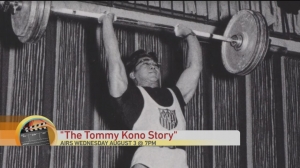Horse racing is one of the oldest and most prestigious sports in human history, known for its thrilling competition, rich cultural significance, and economic impact. From ancient chariot races to modern Thoroughbred events, horse racing has captivated audiences and influenced societies around the world. This article delves into the multifaceted world of horse racing, exploring its origins, evolution, cultural impact, and contemporary challenges. more info: francechevalturf
Historical Origins of Horse Racing
Ancient Beginnings
Horse racing has roots tracing back to ancient civilizations. Evidence suggests that organized horse racing dates back over 4,000 years to ancient Mesopotamia, Egypt, and Greece. Chariot racing was a popular sport among the Greeks and Romans, often held in large arenas called hippodromes and circuses. These events were not only sports but also significant social and religious occasions.
In ancient Greece, chariot races were a central part of the Olympic Games. The prestige of winning was immense, and the sport was associated with the divine, often held in honor of gods like Zeus. Similarly, in Rome, chariot racing was a major public spectacle, featuring teams (factions) with loyal followings. The Circus Maximus, Rome's largest and most famous hippodrome, could accommodate up to 250,000 spectators.
Medieval and Early Modern Periods
During the medieval period, horse racing declined in Europe but survived in forms of jousting and other equestrian competitions among knights. By the 12th century, horse racing re-emerged in the British Isles, influenced by the importation of Arabian horses after the Crusades. These horses, known for their speed and endurance, were bred with local horses, creating a foundation for modern Thoroughbred racing.
In the 17th century, organized horse racing began to take shape in England. King James I established races at Newmarket, which became the sport's center. The 18th century saw the development of the Jockey Club, which standardized rules and regulations, leading to the formalization of races like the Epsom Derby and the St. Leger Stakes.
Evolution of Modern Horse Racing
The Thoroughbred and Standardbred
Modern horse racing primarily involves Thoroughbreds and Standardbreds. Thoroughbreds are renowned for their speed and agility and are used in flat racing and steeplechase events. Their lineage can be traced to three foundation sires: the Byerley Turk, the Darley Arabian, and the Godolphin Arabian, imported to England in the late 17th and early 18th centuries.
Standardbreds, on the other hand, are known for their pacing and trotting abilities. Developed in North America in the 19th century, they are used in harness racing, a form where horses pull a two-wheeled cart called a sulky.
Major Racing Events
Flat Racing: This is the most common form of horse racing, where horses compete on level tracks over various distances. Major flat races include the Kentucky Derby, the Preakness Stakes, and the Belmont Stakes in the United States, collectively known as the Triple Crown. In the UK, the Epsom Derby, the 2000 Guineas, and the St. Leger form the Triple Crown.
Steeplechase: Also known as jump racing, this involves racing over obstacles like fences and ditches. The Grand National in the UK and the Melbourne Cup in Australia are famous steeplechase events.
Harness Racing: In this form, horses trot or pace while pulling a sulky. The Hambletonian in the United States and the Elitloppet in Sweden are prominent harness racing events.
Endurance Racing: This less mainstream form tests the stamina of horses over long distances, sometimes up to 100 miles. The Tevis Cup in the United States is a notable endurance race.
The Cultural and Economic Impact of Horse Racing
Cultural Significance
Horse racing has a profound cultural impact in many countries. It is not just a sport but a tradition that encompasses fashion, social events, and national pride.
The British Royal Ascot: One of the most prestigious race meetings globally, it is attended by royalty and the elite. The event is famous for its strict dress code, especially the elaborate hats worn by women.
The Kentucky Derby: Known as "The Run for the Roses," it is an iconic American event. The Derby's traditions, such as mint juleps, the singing of "My Old Kentucky Home," and the garland of roses for the winner, are deeply ingrained in American culture.
The Melbourne Cup: Dubbed "the race that stops a nation," this Australian event is a public holiday in Melbourne. It is renowned for its fashion, social gatherings, and its significant cultural status.
Economic Impact
Horse racing generates substantial economic activity. It involves a broad ecosystem including breeding, training, betting, and tourism.
Breeding Industry: The breeding of racehorses is a major industry, especially in regions like Kentucky, Newmarket, and Ireland. Stud fees for successful racehorses can be incredibly high, contributing to the economic significance of breeding farms.
Betting: Horse racing and betting are intricately linked. The sport has a unique pari-mutuel betting system, where bets are pooled and payouts are made from the pool. This system funds purses for races and supports racetrack operations. Betting on horse racing remains a significant part of the sport's revenue, contributing to government taxes and regulatory bodies.
Tourism: Major racing events attract tourists, boosting local economies. For example, the Kentucky Derby draws thousands of visitors to Louisville, contributing to the city's hospitality and service sectors.
Contemporary Issues in Horse Racing
Animal Welfare
Animal welfare is a critical issue in horse racing. The treatment of horses, both during and after their racing careers, has garnered significant attention and controversy.
Training and Racing Practices: The use of whips, the frequency of races, and the surfaces on which races are run can impact the well-being of horses. Injuries are a significant concern, with debates on whether synthetic tracks are safer than traditional dirt tracks.
Retirement and Aftercare: The fate of racehorses after their racing careers is a pressing issue. Many organizations and programs focus on retraining retired racehorses for new careers or providing sanctuary.
Drug Use: The use of performance-enhancing drugs in horse racing has led to scandals and calls for stricter regulations. Anti-doping measures and testing protocols have become essential aspects of maintaining the sport's integrity.
Legal and Ethical Concerns
Betting and Gambling: While betting is a major revenue source, it raises issues related to gambling addiction and the ethical implications of wagering on animal races. Regulations vary by country and state, affecting how betting is conducted and controlled.
Racetrack Operations: The closure of racetracks due to financial difficulties or declining popularity poses challenges for the sport. Maintaining profitable racetracks while ensuring fair and safe conditions for racing is an ongoing concern.
Diversity and Inclusion: Horse racing has traditionally been an elite and male-dominated sport. Efforts to increase diversity and inclusion, both in terms of participation and audience, are crucial for the sport's future growth.
The Future of Horse Racing
The future of horse racing depends on addressing the challenges it faces while adapting to changing societal expectations and technological advancements.
Technological Innovations
Broadcasting and Media: Advances in broadcasting and digital media have made horse racing more accessible to a global audience. Online streaming and virtual reality experiences are transforming how fans engage with the sport.
Data Analytics: The use of data analytics in training, performance analysis, and betting is becoming increasingly prevalent. This can improve race strategies, enhance horse care, and provide more informed betting options.
Sustainability: Efforts to make horse racing more sustainable, such as adopting eco-friendly practices at racetracks and supporting research into safer track surfaces, are essential for the sport's long-term viability.
Community Engagement and Education
Building stronger connections with local communities and educating the public about the sport are vital for its future. Initiatives like open days at stables, educational programs about horse care, and community events can foster a positive image and attract new fans.
Internationalization
Horse racing is becoming more global, with events and competitions attracting international participants and audiences. This trend promotes cross-cultural exchanges and strengthens the sport's global appeal.
Conclusion
Horse racing, with its deep historical roots and contemporary allure, remains a vibrant and influential sport. Its rich tapestry includes ancient traditions, thrilling competition, and complex challenges. As horse racing navigates issues of animal welfare, legal regulations, and societal changes, its future will be shaped by innovation, ethical considerations, and a commitment to preserving the essence of the sport. Whether you are a seasoned enthusiast or a curious newcomer, horse racing offers a unique window into the world of speed, strategy, and tradition.
References
- Cassidy, R. (2002). The Sport of Kings: Kinship, Class, and Thoroughbred Breeding in Newmarket. Cambridge University Press.
- Hyland, A. (1990). The Horse in the Ancient World. Praeger.
- Hill, L. (2017). The Dynamic Horse: A Biomechanical Guide to Equine Movement and Performance. Trafalgar Square Books.
- Manley, R. O. (2008). Horse Racing Divas: Portraits of the Horse Racing's Leading Ladies. Anderson Media.
- Tabor, S. & Smith, B. (2019). Race Horse Men: How Slavery and Freedom Were Made at the Racetrack. Harvard University Press.
- Vamplew, W. (1976). The Turf: A Social and Economic History of Horse Racing. Penguin.





